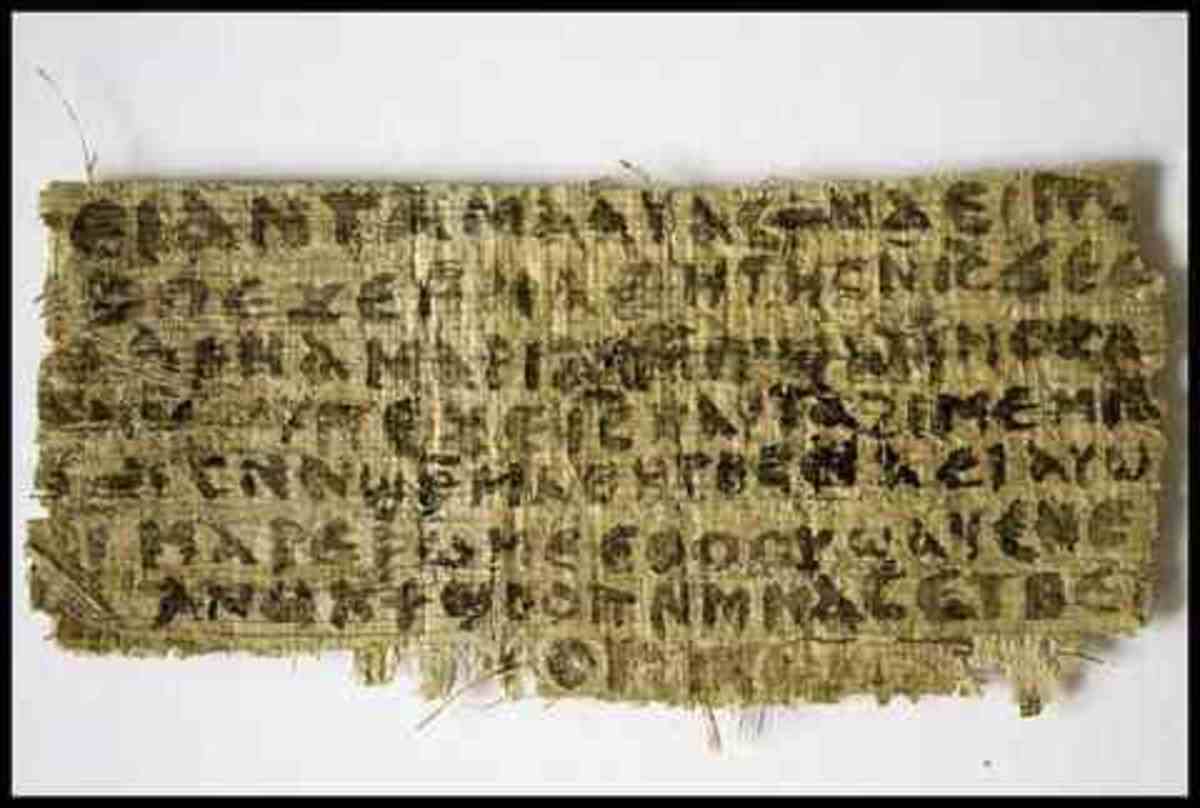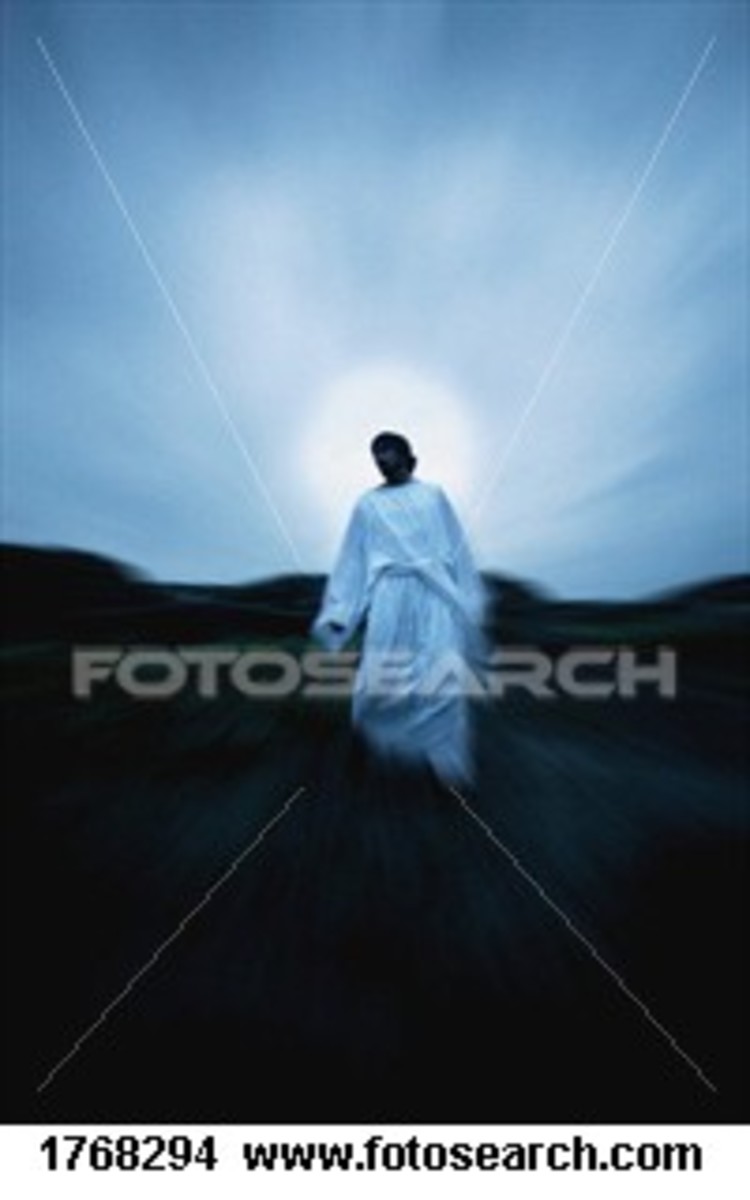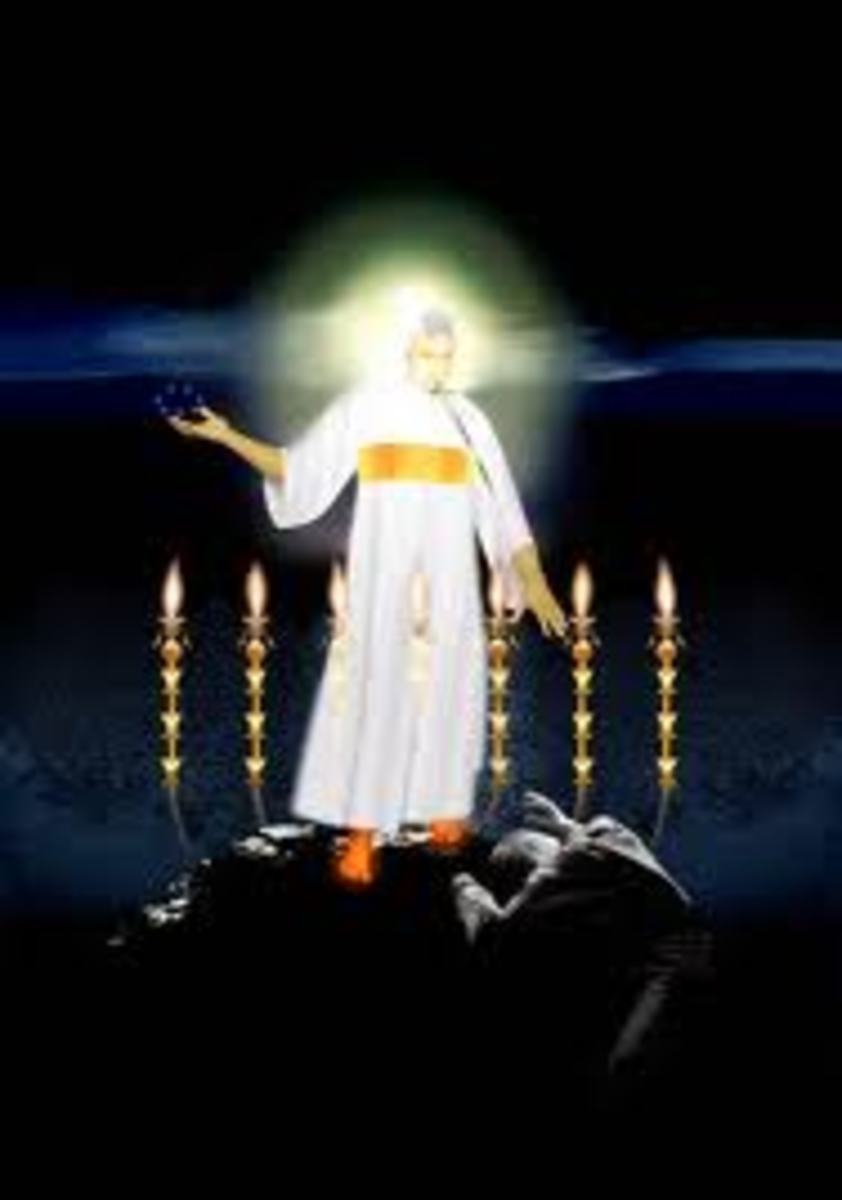How Authentic is the Gospel of Jesus' Wife? The Coptic Text Goes Under the Microscope
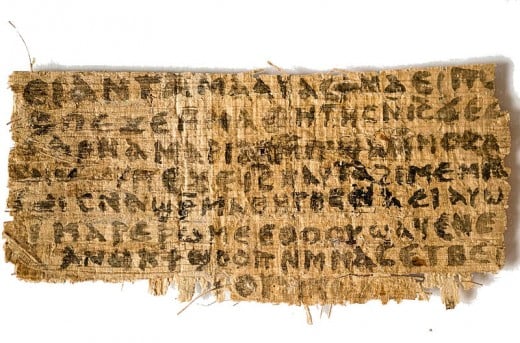
In 2012 the discovery of an ancient text that allegedly refers to the wife of Jesus Christ caused quite a stir among members of the Christian faith. Written in Coptic (an Ancient Egyptian text) on a small piece of ancient papyrus, the Gospel was publicly revealed at the International Congress of Coptic Studies in Rome on September 18 2012 by Karen King, the Hollis professor at Harvard Divinity School and an historian of early Christianity.
While all the deciphered sentences are fragmented and incomplete, the controversial text in the document that suggests that Jesus was married has been translated as "Jesus said to them, "My wife..". These six words accompanied by another section that reads "As for me, I dwell with her in order to..." and a third unfinished sentence that refers to someone named Mary, have led some to believe that the gospel may be indicating that Jesus and his female companion, Mary Magdalene, were indeed husband and wife.
The existence of this previously lost gospel, if found to be genuine, potentially contradicts centuries of Church dogma and religious belief that Jesus was celibate.
This isn't the first time such a theory has existed, with this idea being popularized through film and literature such as Martin Scorsese's The Last Temptation of Christ and Dan Brown's The Da Vinci Code, which depict or refer to Jesus making Mary Magdalene his wife with whom he has sexual relations.
This Hub looks at the background to this gospel, the reasons why it's controversial and examiners' views on whether it's authentic.

What is the Backstory of The Gospel of Jesus' Wife (GJW)?
King was first informed about the document in 2010, when she received an email from a manuscript collector who had bought the Gnostic gospel in 1999 from another collector, identified as Hans-Ulrich Laukamp of Berlin, after he acquired it in Potsdam, Eastern Germany in 1963. The manuscript collector (who insisted on anonymity) emailed King again a year later saying that several buyers had expressed interest in the GJW but considering the religious significance of the document he didn't want it to simply disappear into someone else's private collection.
The gospel fragment was delivered to King personally who then consulted Professor AnneMarie Luijendijk, an authority on Coptic papyri and sacred scriptures at Princeton University; and Roger Bagnall, a renowned papyrologist who directs the Institute for the Study of the Ancient World at New York University.
The author of the Coptic papyrus is unknown and will probably remain so even if missing pieces from the document were located. They concluded that the middling penmanship, the papyrus' color and the texture along with the parallel deterioration of the ink and the reeds, included none of the signs of a forgery.
According to Luijendijk, the less than stellar calligraphy is indicative that the document was probably not read in a Church or written by any religious official, but rather that it belonged to early Christians who used it in personal or group study, similar to modern day bible study groups. The GJW's official website states that analysts so far believe the text had been written by someone "with only an elementary education, who wrote with a nubby pen that didn’t let the ink flow well, causing uneven letters and blotting".
King has stressed that the document shouldn't be seen as definitive proof that Jesus was married to Mary Magdalene. Instead King says that it simply may suggest that some people in Ancient time believed that Jesus had a wife.
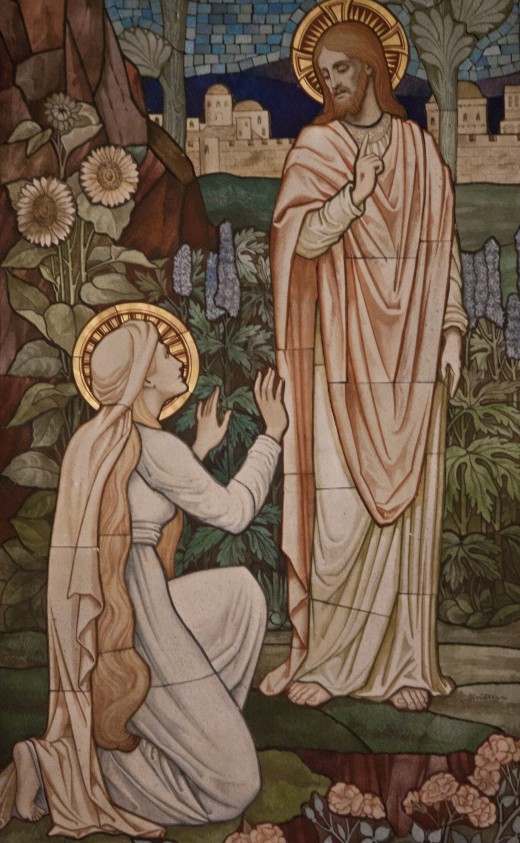
Initial Analysis and Details of the Gospel of Jesus' Wife
The GJW appears on a scrap of papyrus, 4cm in height by 8cm in width, no larger than a credit card, with the scripture consisting of 33 words within 14 incomplete sentences.
The back side (or verso) contains six lines of fragmented text and is so deteriorated that only a few of the faded words and abstract phrases are legible: "my mother", "three" and "forth which".
The front side (or recto) is in far better condition and has around eight lines of incomplete text that have been translated as follows:
- “...not [to] me. My mother gave to me li[fe…”
- "The disciples said to Jesus..."
- "...deny. Mary is worthy of it" alternatively translated as "Mary is n[ot] worthy of it")
- "...Jesus said to them, “My wife . ."
- "… she will be able to be my disciple..."
- "Let wicked people swell up …"
- "As for me, I dwell with her in order to..."
- "image".
Its rough edges suggest that it was torn out of a larger document, which may have been carried out by an antiquities dealer who was trying to increase sales by tearing the entire document into pieces and selling each individual scrap.
King believes that this Gnostic gospel was originally written in Greek during the second century and at least 100 years after Jesus is believed to have been crucified. Originally paleographic methods dated the papyrus fragment of Coptic text as 4th Century A.D, while radiocarbon dating estimated a date of origin between 405 to 209 BCE. Further expert analysis of the Coptic fragment now date the papyrus between 6th to the 9th Century A.D, Upper Egypt, with a mean date of 741A.D. Its use of Sahidic Coptic text was commonly used during the third and fourth centuries when Alexandria competed with Rome as the main incubator of Christian thought.
An analysis of the ink has showed it to be primarily based on carbon black pigments such as “lamp black”.The ink's carbon character was found to be consistent with ancient inks used in other documents from the 1st to the 8th Centuries A.D.
A similar, but distinct, type of ink was also used in a scrap of papyrus that's believed to contain lost text from the Gospel of John. King acquired this item and several others from the same manuscript collector that first contacted her about the GJW.
Ancient Papyrus: Does it Matter if Jesus was Married?
Is it an Authentic Ancient Text or a Modern Day Forgery?
Despite King, Luijendijk, and Bagnall insisting that all the evidence points to the text being a genuine piece of work by early Christians and not a modern day forge, the wider religious community and fellow scholars has been fairly mixed, with some confirming its authenticity while others have written scathing articles denouncing it as a fraud. Unsurprisingly, from day one the central governing body of the Roman Catholic Church in The Vatican has remained staunchly insistent that the document is fake.
Arguably the most recognized critic currently is Christian Askeland, an evangelical Christian and a Coptic specialist at Indiana Wesleyan University. Askeland analyzed another document, which was said to be a lost fragment from The Book of John, that was also in the possession of the manuscript collector that contacted King. Askeland found that the text from this fragment was identical to the Codex Qau, a document discovered by Flinders Petrie at an Egyptian Settlement in 1923 and published by Herbert Thompson the following year.
The Codex Qau and the Gospel of John fragment are both written in Lycopolitan a Coptic Dialect, which according to Askeland does not seem to been used in the "documentary tradition" from the 6th to 8th Centuries AD. However carbon dating places the papyrus fragment's date of origins as somewhere between the 7th and 9th Centuries AD and therefore outside of the time period that Lycopolitan is believed to have been used in documentation.
The writing style of the fragment is also nearly identical to the Gospel of Jesus of Wife, leading to Askeland assuming that it was written by the same hand and concluding that the GJW is also a forgery. Askeland's finding is backed by other scholars, notably Marc Goodacre, Professor of New Testament and Christian Origins at Duke University; and researcher Alin Suciu, researcher at the Hiob Ludolf Centre for Ethiopian Studies, Asien-Afrika-Institut, Hamburg University.
Lou Depuydt from Brown University elaborates on the alleged forgery, denouncing the Gospel of Jesus' Wife as so patently fake that it “seems ripe for a Monty Python sketch.” According to Depuydt the GJW is a mere patchwork of plagiarized text ripped straight from The Gospel of Thomas, which was found in 1945 in Nag Hammadi, Egypt with over fifty other writings.
Depyudt claims that "every single one of the handful of phrases (and almost every single word) in the Text is found almost exactly in the Gospel of Thomas". For example the first deciphered phrase on the GJW, "My mother gave to me life” bears a striking resemblance to Section 101 of the Gospel of Thomas which reads "but my true [mother] gave me life". The third phrase of the Gospel in question has been translated as "Mary is not [an] worthy of it", which resembles Section 56 of Thomas' Gospel which states "the world is not worthy of him".
What's more Depyudt argues that the GJW contains numerous grammatical blunders that indicate that the writer had poor knowledge of Coptic and therefore was probably not an ancient scribe of the time but a modern day forge.
King has however challenged Depuydt, stating that this argument is full of inaccuracies and the grammatical blunders posited by Depuydt are "the result of incorrect analysis or can be accounted for as examples of known, if relatively rare, native Coptic usage".
Further investigation by Livescience has cast additional doubt on the legitimacy of the Gospel. The news site looked into the background of Hans-Ulrich Laukamp, the man who had allegedly owned GJW from 1963 to the late 1990s when he sold it to the unnamed manuscript collector that contacted King in 2011. As Laukamp died in 2001-2002, Livescience spoke with Rene Ernest, the representative of Laukamp's estate, who stated that Laukamp didn't didn't own the papyrus, didn't collect or sell antiquities, had no interest in historical items and had been living in West Berlin in 1963 and therefore wasn't able to travel to East Germany to buy the document at the time.
Ernest's claims were supported by Axel Herzsprung, who with Laukamp co-owned American Corporation for Milling and Boreworks (ACMB). Herzprung stated that Laukamp was known to collect souvenirs when he traveled, but was unaware of him collecting antiquities.
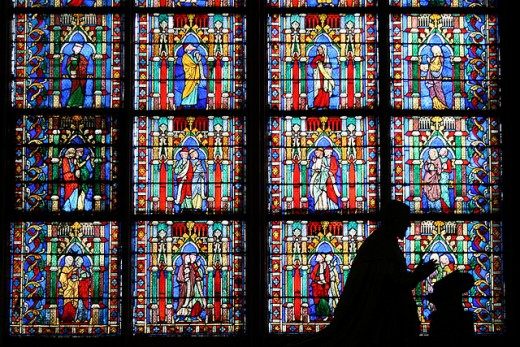
Why is the Gospel of Jesus' Wife Controversial?
The New Testament remains mysteriously silent on whether Jesus' had any relationships or engaged in sexual intercourse during his 33-years. However the existence of an 18-year gap, where the bible gives no details on his activities from age twelve to thirty, have led many to wander what he did exactly during that time and whether he may have had such relationships like any typical boy and young man, prior to commencing his mission.
The absence of any information on his relationship status in the Bible of any Christian denomination, have led many religious scholars and theologians to assume that he probably didn't have a wife. The requirement for the Catholic clergy to remain celibate, and therefore refrain from romantic relationships or sexual intercourse, is based on this idea that Jesus also resisted such temptations and made the same sacrifice so that he could serve mankind.
Many Christians don't have any problem with Jesus having a wife and kids, as it doesn't take anything away from the things he reportedly did and said. Others however believe that although he was human, he was also godly, and his ability to refrain from succumbing to lust and "the impurity" of sex is part of what made him divine.
This was reflected in a 2012 analysis of online chatter on Twitter and Facebook following the finding of GJW. From 740 posts around 19% of comments were excited and open to the idea of a married messiah; 22% were outraged, believing it to be blasphemy; while 48% percent remained skeptical on the authenticity or interpretation of the document; and 11% treated Karen King's finding as a joke.
Today most Christian denominations maintain a priesthood exclusively consisting of males. This is based off of the group of individuals that accompanied Jesus as his disciples, all of whom are recognized as male. Meanwhile female followers were seemingly excluded from entering Jesus' inner circle of companions and unable to earn this distinct "disciple" status. One of the eight semi-translated sentences states " ... she will be able to be my disciple ...", which some have seen as possible confirmation that women could also be a disciple of Jesus, therefore undermining the centuries-old Christian Tradition that only men should become priests.
There's also the risk that if a piece of scripture comes along stating that Jesus was married, possibly with kids, it challenges views that have been held and enforced by the Church for centuries, potentially leading to Christians casting further doubt on other religious beliefs.
Other Theories of Jesus Relationship Status
In the New Testament there are several references to Jesus' bride in The Gospel of John 3:29; The Book of Revelations 21:2-11; Ephesians 5:24-27; and 2 Corinthians 11:1-4 among other officially-recognized canon books and gospels. These references have been interpreted by most Christians to mean that Jesus' bride is The Church, a view that has been enforced by the Vatican.
However there are a number of non-canon references that claim Jesus had relationships and got married to a single person rather than an institution. For example, The Unification Church, a fairly new Christian movement that was founded in South Korea in 1954, holds a fundamental belief that Jesus had intended to marry and raise a "perfect" and "God-centered" family, after Adam and Eve failed to do so.
A very popular view is that the Bible remains silent on the subject of Jesus' relationship status, as it's a given that he would have married in accordance with social expectation. It's widely believed that all Jewish males were married at the time, particularly if they were rabbis. Some supporters of this theory claim that Jesus may have had a wife during the 18-year period that was omitted from the Bible, but his wife died, possibly in childbirth, before he began his public ministry.
However opponents to this theory point to exceptions where men did not get married. New Testament scholar Bart D Ehrman says that it was impossible for every Jewish male to tie-the-knot in the First Century AD as there would have been a greater ratio of men to women. Many opponents also use the example of the Essenes, a commune of Apocalyptic Jews who notably authored The Dead Sea Scrolls. The Essenes are also recognized for remaining single, which was probably a personal choice.
Gnostic texts such as The Pistis Sophia and The Gospel of Mary are both widely recognized for elevating the status of Mary Magdalene from a reformed prostitute, as she's portrayed in the New Testament, to one of Jesus' closest companions.
The Gospel of Philip, a Gnostic text that was one of many documents found in Egypt in 1945 that now make up 'The Nag Hammadi Library', includes two passages that many see as the greatest indication that Jesus and Mary were married to one-another. The first passage states "there were three who always walked with the Lord: Mary his mother and her sister and Magdalene, the one who was called his companion”. Some scholars have interpreted the word "companion" to mean "spouse".
The second passage reads as follows: “And the companion of the Savior is Mary Magdalene. But Christ loved her more than all the disciples and used to kiss her often on her mouth. The rest of the disciples were offended by it and expressed disapproval. They said to him, ‘Why do you love her more than all of us?’ The Savior answered and said to them, ‘Why do I not love you like her?’ When a blind man and one who sees are both together in darkness, they are no different from one another. Then the light comes, then he who sees will see the light, and he who is blind will remain in darkness”.
Of coarse an obvious counter-argument to this passage suggesting that Jesus and Mary were married, is that it would been obvious to the disciples on why Jesus loved Mary the most if she was his wife. Also if it was the case that they were married, Jesus could have given a rather simple reply, rather than the cryptic verse that's quoted in the passage.
Arguably the most controversial non-canon reference to Jesus is a passage within The Secret Gospel of Mark, a manuscript that was mentioned in a letter by Clement of Alexandria, a Christian theologian of the Second and Third Centuries AD. The letter (known as the Mar Sabar Letter) quoted a passage from this secret gospel that involves a woman in Bethany beseeching Jesus for help after her brother had died. This led Jesus to entering her brother's tomb and returning him to life - an event that highly resembled Jesus' resurrection of Lazarus.
This is where the story becomes really controversial for many Christians.
According to the passage, moments after returning to life, the young man "looked upon him (Jesus), loved him and began to beseech him that he might be with him". Later the man approaches Jesus wearing only a linen cloth and then spends the night with him.
There are several interpretations of the text, including that the events described in the passage are symbolic of baptism, with Jesus baptizing the young man. However some have read the passage literally and with a 20th Century understanding of sexual undertones claim that the gospel is suggesting Jesus had a homosexual encounter with this young man.
The secret Gospel in its entirety has never been found, with the only known reference being this letter which was discovered by Morton Smith in 1958 while cataloging documents in a temple in Mar Sabar Palestine. Many people have denounced it as a forgery rather than an original redaction of the Gospel of Mark, though there are also plenty of individuals who believe that it was a real manuscript.
As for the Gospel of Jesus' Wife, well the verdict is still out on its authenticity, with researchers unlikely to reach a consensus in the near future.
Bibliography
- Askeland, C, John's Gospel: The Coptic Translations of its Greek Text. Germany, Walter de Gruyter & Co. 2012. pp.141-144.
- Askeland, C. 'The forgery of the Lycopolitan gospel of John' accessed in April 2014 at http://evangelicaltextualcriticism.blogspot.com.au/2014/04/the-forgery-of-lycopolitan-gospel-of.html
- Beasley, J. 'Testing Indicates "Gospel of Jesus's Wife" Papyrus Fragment to be Ancient', Harvard Divinity School Press Release, April 10 2014.
- Bratu, B. 'Too holy' for sex? The problem of a married Jesus, NBC News, Sep 24, 2012.
- Depuydt, L. 'The Alleged Gospel of Jesus's Wife: Assessment and Evaluation of Authenticity', Harvard Theological Review, Volume 107, Issue 02, April 2014, pp.172-189
- "Does It Matter If Jesus Was Married?", Panel Discussions hosted by the Black Mountain Institute in January 2014.. Audio Recordings accessed at http://blackmountaininstitute.org/news-and-events/events-archive/2013-14/does-it-matter-if-jesus-was-married/
- Evan, C.A. The Routledge Encyclopedia of the Historical Jesus. New York, USA; Routledge 2008.
- Goodstein, L. 'Papyrus Referring to Jesus’ Wife Is More Likely Ancient Than Fake, Scientists Say,' The New York Times, April 10 2014.
- Goodstein, L. 'Fresh Doubts Raised About Papyrus Scrap Known as ‘Gospel of Jesus’ Wife’, The New York Times, May 4 2014.
- Jarus, O. 'Gospel of Jesus's Wife' Looks More and More Like a Fake', Livescience, May 2 2012.
- King, K.L, A. 'Jesus said to them, "My wife…" A New Coptic Gospel Papyrus', Harvard Theological Review, Volume 107, Issue 02, April 2014, pp. 131 - 159
- King, K.L. 'Response to Leo Depuydt, “The Alleged Gospel of Jesus's Wife: Assessment and Evaluation of Authenticity,” Harvard Theological Review, Volume 107, Issue 02, April 2014, pp. 190 - 193
-
King, K.L, “Jesus said to them, ‘My wife…’” A New Coptic Gospel Papyrus', 2012 (Original Version), Accessed in May 2014 at http://www.hds.harvard.edu/sites/hds.harvard.edu/files/attachments/faculty-research/research-projects/the-gospel-of-jesuss-wife/29865/King_JesusSaidToThem_draft_0920.pdf
- Pattengale, J. 'How Jesus' Wife Hoax Fell Apart', Wall Street Journal. May 1 2014.
- Roberts, M.D. 'Was Jesus Married? A Careful Look at the Real Evidence', Patheos, 2010.
- Sabar, A, 'The Inside Story of a Controversial New Text About Jesus', Smithsonian, December 18 2012.
- Vergano, D. 'No Forgery Evidence Seen in "Gospel of Jesus's Wife" Papyrus', National Geographic, April 10 2014.
- Watson, F. 'The Gospel of Jesus’ Wife: How a fake Gospel-Fragment was composed', Posted on September 20 2012 at http://markgoodacre.org/Watson.pdf

